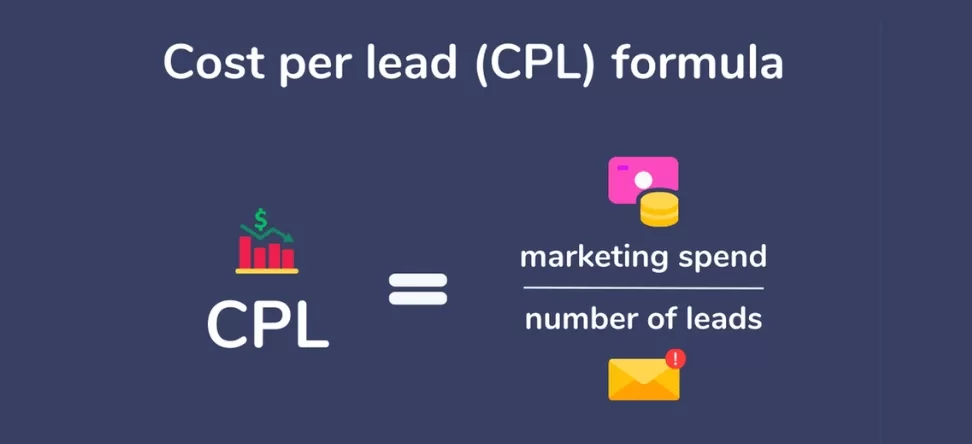How To Calculate What Your Leads Are Costing You?
So you doing marketing activity, but don’t know what is working and what is not. What is the exact cost per lead and is it profitable? This article aims to narrow down some of your calculations. Let’s take an example:
Let’s say from the marketing efforts, you received 50 leads in a month.
- You were able to convert 5 from those leads. Lead to sale ratio = 50/5 = 10%
- Those 5 conversions generated AED 10,000 in total profit. Profit per conversion = 10,000/5 = AED 2000 profit per sale.
- Profit per lead = profit generated / total leads received = AED 10,000 / 50 = AED 200

Calculate your marketing spend and know how much you’re paying per lead generation.
Many B2B search marketing programs are designed to drive prospects to online contact or registration forms. A common way to manage these campaigns is to drive cost/registration lower over time. Of course, one must ask: what is happening to volume with this strategy? How many potential registrations are being left on the table?
Establishing the right cost-per-lead model involves testing the market relationship between volume and cost… and ultimately must be driven by ROI.
If 50 leads per month cost $2,500 ($50/lead) twice as many leads will not necessarily cost $5,000 (still $50/lead). It is common for lead costs to increase as investment increases. Why? With a very small budget, you can milk all possible efficiencies out of a PPC campaign.
As spending grows, budgets and bids are increased and a wider keyword net is cast. All of this will likely generate more leads but at a higher overall, average cost/lead.
For years marketers have measured the effectiveness of marketing campaigns and events by assessing cost per lead as their indicator of success. This metric was traditionally used to measure the effectiveness of advertising and the lead was typically unqualified, meaning there was no presence of an identified project, budget, or other qualifications.
While this measurement still may have some significance, it is important to note that “revenue per lead” is the true indicator of success. After all, what good is it to have a low cost per lead if the quality is not sufficient, meaning a low probability to produce revenue? In the “revenue per lead” paradigm, it is possible to link real revenue to lead generation efforts and determine profitability.
Why has this cost-per-lead paradigm lasted for so many years?
1) Simplicity – It is much easier to report what happens on the surface such as how many responses resulted from a direct mail campaign versus how many responses entered the pipeline or resulted in a sale.
2) Long sales cycles – Complex products/services tend to have long sales cycles, many of which are 6 months to one year or more. Management within companies is demanding to know the trends per campaign and Marketing managers are eager to justify strategies. Reporting for campaign and event effectiveness tends to be delivered and taken as conclusive evidence too early within the stages of a sales cycle. Furthermore, there is usually no plan in place to report the long-term effects.
3) Ability to maintain reporting integrity – Most marketing departments lose the ability to report as deals mature in the sales cycle. As deals get closer to resolution, the communication between Sales and Marketing diminishes.
4) Multiple campaigns and events – A majority of the time, companies will implement multiple campaigns, events, and strategies during a typical sales cycle of 6 months to one year. This makes reporting more complex for marketing since they usually try to attribute success to one triggered event.
To be a most valuable asset to an organization, a marketing department should be able to show the entire picture of how their company is performing and assist the sales department in obtaining better closing ratios. This means the marketing executives must have insight into the lead status as they mature, associated marketing events that contributed to each lead, and the value of each opportunity.
Working to obtain the revenue per lead statistic takes time.
We are a digital marketing company in Dubai. Talk to us about your lead generation for cost per lead
Contact us and leave your message. We currently have a promotion offer.
Resources:
https://searchengineland.com/finding-the-optimal-cost-per-lead-16205

Mukesh Pandey is a Digital Marketing Strategist. Passionate about Digital Marketing and the trends in the industry for 10 years. He is Google Ads Certified, Social Media Ads Manager & SEO Consultant. He has trained over 500 executives & business owners over the years. Helped over 300 companies achieve their digital marketing results. He also founded Leads Dubai which is a Lead Generation Company in Dubai. Hire Mukesh for your Marketing Campaign
Contact Us
Our Services
- Google Ads
- SEO Services
- Email Marketing
- SMS Marketing
- Whatsapp Marketing
- Influencer Marketing
- Facebook Advertising
- Instagram Advertising
- Tiktok Advertising
- YouTube Advertising
- Linkedin Advertising
- Mobile App Marketing
- Pay Per Lead
- Outdoor Advertising
- Outdoor LED Ads
- Burj Khalifa Ads
- Metro Advertising
- Radio Advertising
- Newspaper Advertising
- Flyer Distribution
- Website Development
- Social Media Content Creation
Blog Categories
- Advertisement (12)
- Blog (416)
- Content marketing (4)
- digital marketing (1)
- Digital Marketing (19)
- Digital Marketing Training (7)
- Email Marketing (19)
- Facebook (40)
- Google Ads (62)
- Infographics (42)
- Instagram (9)
- Marketing Agency (3)
- Mobile Marketing (17)
- Outdoor Advertising (48)
- Press Release (9)
- Programmatic Advertising (1)
- Radio Advertising (1)
- SEO (42)
- Social Media Marketing (54)
- Testimonials (38)
- Website Design Development (15)
- Youtube (3)






















